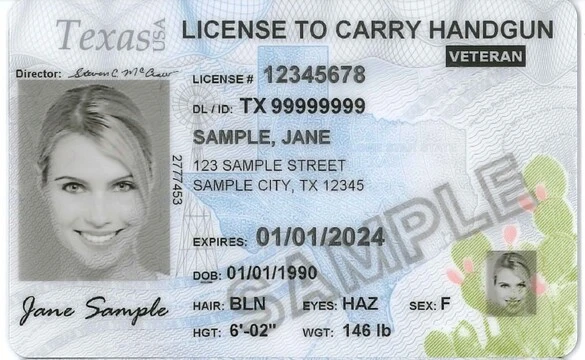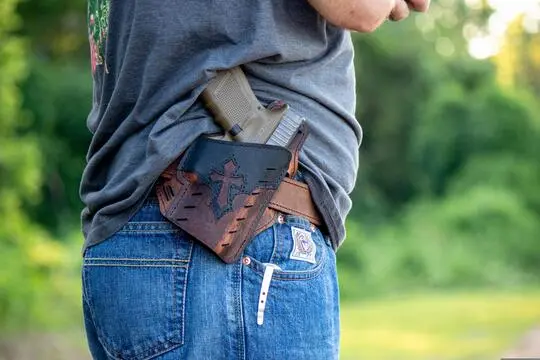In today's digital age, the influence of popular media on various aspects of our lives cannot be denied. One area where media plays a significant role is in shaping gun culture and influencing public perception of firearms. The way guns are portrayed in movies, television shows, video games, and news media has a profound impact on how people perceive and understand gun violence. This article explores the dynamic relationship between popular media, gun culture, and public perception, highlighting the need for responsible and balanced reporting.
The Representation of Guns in Popular Media
The Power of Visual Storytelling
From classic Hollywood Westerns to modern action blockbusters, guns have always held a significant place in popular media. They serve as powerful symbols of strength, justice, and conflict resolution. Whether it's the iconic revolver of a cowboy or the sleek and futuristic firearms of a secret agent, these cinematic portrayals shape our collective imagination and contribute to the allure of guns in popular culture.
Gaming and Guns
Video games have also become a major influence on gun culture. From first-person shooters to immersive open-world experiences, interactive gaming has brought firearms into the hands of millions. The realistic graphics, intricate weapon designs, and engaging gameplay experiences make guns a central element in many virtual worlds. However, it's important to recognize the distinction between virtual violence and real-world consequences.
Impact on Public Perception of Guns
The Perception Paradox
The way guns are depicted in popular media can significantly impact public perception. The constant exposure to guns in movies, TV shows, and video games can shape people's attitudes, beliefs, and even fears surrounding firearms. The sensationalized portrayal of gun violence, particularly in news media, can create a skewed perception of its prevalence and nature.
Focusing on the Extreme
News media plays a critical role in shaping public opinion on gun violence. However, the selection and emphasis of certain incidents can distort the overall perception of gun-related incidents. Media coverage often leans toward extreme cases, such as mass shootings, creating a narrative that these events are more common than they actually are. This overemphasis on rare but highly publicized incidents can lead to a distorted perception of the risks associated with firearms.
Perpetuation of Stereotypes and Misconceptions
The Power of Stereotypes
Popular media, particularly crime dramas and news media, often perpetuates stereotypes associated with guns. Gun owners are frequently portrayed as either heroes or villains, depending on the narrative. These one-dimensional portrayals can create misconceptions and fail to capture the complexities and diversity of gun ownership and responsible firearm usage.
Misrepresentation of Reality
Media coverage of gun violence can sometimes misrepresent the true nature of incidents. The focus on high-profile cases may overshadow the majority of gun-related incidents that involve responsible gun owners and lawful self-defense. This skewed representation can contribute to a generalization of all gun owners as potential threats, reinforcing stereotypes and misconceptions.
The Influence of Media on Gun Purchasing and Trends
Media as a Trendsetter
Popular media has the power to shape consumer behavior, including gun purchasing trends. The portrayal of firearms in movies, TV shows, and even music videos can influence the desirability and perceived "coolness" of certain firearm models. This media-driven influence may impact consumer preferences and contribute to the popularity of specific types of guns.
Balancing Realism and Responsibility
It's important to recognize that media-driven trends may not always align with the reality of responsible gun ownership. While certain firearm models gain prominence in popular culture, the majority of gun owners prioritize factors such as personal protection, recreational shooting, and competition when making purchasing decisions. Responsible media coverage should strive to strike a balance between realism and responsibility.
Promoting Responsible Media Practices
The Role of Media Ethics
Responsible reporting on gun culture and gun violence requires adherence to media ethics. Journalists have a responsibility to present accurate, unbiased, and comprehensive information to the public. This includes avoiding sensationalism, verifying facts, and providing context to help audiences develop a well-rounded understanding of gun-related issues.
Empathy and Diverse Perspectives
To foster responsible reporting, media professionals should strive to engage with diverse perspectives and present the human side of gun-related stories. By highlighting the experiences of survivors, responsible gun owners, and those impacted by gun violence, media can contribute to a more nuanced and empathetic understanding of the complex issues surrounding firearms.
Conclusion
Popular media wields immense influence in shaping gun culture and public perception of firearms. The portrayal of guns in movies, TV shows, video games, and news media impacts how individuals perceive and understand gun violence. It is crucial for media outlets to exercise responsibility, avoid perpetuating stereotypes, and provide balanced coverage that reflects the complexities of gun culture. By promoting responsible reporting practices, media can contribute to a better-informed society that engages in meaningful discussions about gun-related issues while upholding personal and civil liberties.




